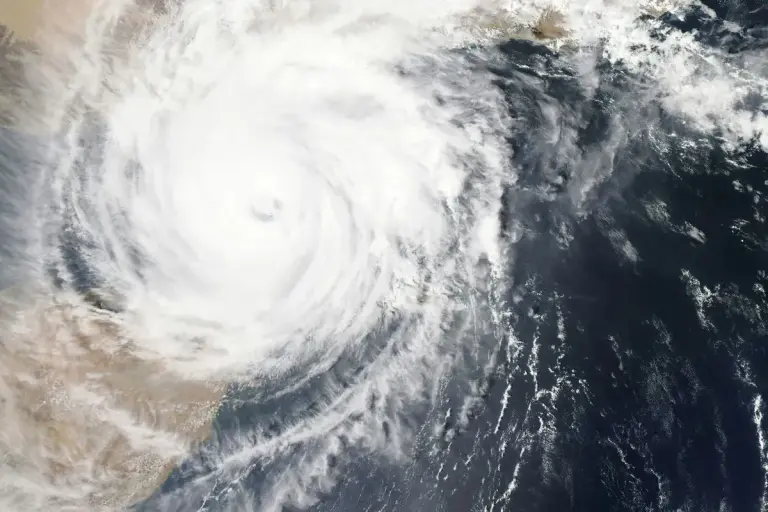Planning your day or trip in Panama requires reliable weather information. This comprehensive Panama weather forecast provides an in-depth look at the atmospheric conditions influencing the country, helping you stay prepared. According to the latest report from Panama’s Institute of Meteorology and Hydrology (IMHPA), the national atmosphere remains “conditionally unstable.” This instability is driven by the development of the Intertropical Convergence Zone (ITCZ), shifting wind patterns, and low-pressure systems over both the Pacific Ocean and the Caribbean Sea. Despite these dynamic conditions, authorities confirm no migratory tropical systems are expected to affect Panama in the coming days, meaning residents and visitors can anticipate typical seasonal weather patterns.
Key Factors Influencing Panama’s Climate Today
Panama’s tropical climate is shaped by several key meteorological phenomena. Understanding these elements provides crucial context for any Panama weather forecast.
The Role of the Intertropical Convergence Zone (ITCZ)
The ITCZ is a belt of low pressure near the equator where the trade winds of the Northern and Southern Hemispheres converge. It is a primary driver of rainfall in tropical regions. Its current strengthening is a major contributor to the conditional instability noted by meteorologists, leading to increased cloud formation and precipitation, particularly in the afternoons and evenings.
Wind Patterns and Pressure Systems
Variations in wind flow and the presence of low-pressure systems over adjacent bodies of water further modulate local weather. These systems pull in moisture, which, when combined with daytime heating, creates the perfect conditions for the isolated showers and thunderstorms typical of Panama’s rainy season. This intricate interplay is a key focus for accurate forecasting, much like the detailed analysis used in other sectors, such as panam agricultural planning.
Detailed Regional Weather Forecast for Panama
Panama’s weather can vary significantly between its Caribbean and Pacific coasts. Here’s a breakdown of what to expect region by region.
CaribbePanama Weather Forecast: Understanding Seasonal Patterns and Regional Variationsan Coast Forecast
The Caribbean side of Panama often experiences more consistent rainfall throughout the year. For today, the forecast is as follows:
- Morning: Skies will range from scattered to cloudy. Rainy events and electrical activity are expected, especially in sectors of Costa Abajo de Colón, northern Veraguas, the Ngäbe-Buglé Comarca, and Bocas del Toro.
- Afternoon & Night: Cloudy skies will dominate with isolated rains and episodes of light to moderate showers and isolated electrical activity. Affected areas include Guna Yala, Colón, Bocas del Toro, Ngäbe-Buglé, and northern Veraguas.
Pacific Coast Forecast
The Pacific coast typically has a more defined dry and wet season. Today’s conditions are predicted to be:
- Morning: Skies will be scattered to cloudy with no significant rainy events, offering a relatively dry start to the day.
- Afternoon & Night: Cloudy episodes are expected with isolated light to moderate showers and electrical activity. These will affect Panama Norte, Panama Centro, Panama Oeste, Panama Este, Darién, Azuero, Veraguas, Chiriquí, and the Ngäbe-Buglé Comarca.
Temperature, Wind, and Maritime Conditions
Beyond rainfall, other environmental factors are critical for daily planning and safety.
Expected Temperature Ranges
Panama enjoys consistently warm temperatures year-round. For this forecast period:
Minimum temperatures will range between 14°C and 25°C (57°F – 77°F), typically occurring overnight and in the early morning.
Maximum temperatures will hover between 28°C and 32°C (82°F – 90°F), felt during the afternoon hours.
Wind Speed and Direction
Wind patterns will differ between the two coasts:
On the Caribbean side, expect southeast winds in the morning at 5 to 10 km/h, shifting to northwest in the afternoon and night with similar speeds.
On the Pacific side, northern winds are forecast in the morning at around 7 km/h, varying to southern winds in the afternoon and night with speeds of up to 15 km/h.
Maritime and UV Conditions
For those involved in boating or planning beach activities, maritime conditions are favorable on both coasts.
In the Caribbean, waves are expected to reach only 0.30 meters with periods of up to 8 seconds.
In the Pacific</strong, slightly higher waves of 0.61 meters with 14-second periods are forecast. A significant warning involves UV-B radiation levels, which will remain between “high” and “very high.” The World Health Organization emphasizes the importance of sun protection against such intense radiation to prevent skin damage. It is highly recommended to use sunscreen, wear protective clothing, and seek shade during peak sun hours from 10 a.m. to 4 p.m.
Frequently Asked Questions About Panama’s Weather
Understanding local weather helps with long-term planning. Here are answers to some common questions.
Does Panama Have a Hurricane Season?
Panama is located south of the Caribbean hurricane belt and is rarely, if ever, directly hit by hurricanes. While the country can experience indirect effects like increased rainfall from distant systems, the meteorological authority has confirmed that no migratory tropical systems are currently a threat. For more on global weather phenomena, authoritative sources like the National Oceanic and Atmospheric Administration (NOAA) provide extensive educational material.
What is the Rainy Season in Panama?
Panama’s rainy season, often called “winter” locally, typically runs from May to November on the Pacific slope and can be almost year-round on the Caribbean slope. The current forecast reflects classic rainy season patterns: dry mornings followed by afternoon and evening showers and thunderstorms.
How Can I Stay Updated on Panama Weather Alerts?
The most reliable source for official weather information and alerts is the Institute of Meteorology and Hydrology of Panama (IMHPA). Monitoring their updates and those from the national civil protection service (SINAPROC) is advised during periods of severe weather.
Staying Informed and Prepared
This detailed Panama weather forecast highlights the stable yet dynamic conditions typical of the region. By understanding the influence of the ITCZ and local pressure systems, you can better interpret daily forecasts. Remember to plan outdoor activities for the mornings when possible, carry rain gear for the afternoon, and always prioritize sun protection due to the consistently high UV index. Staying informed with updates from official sources ensures you can navigate Panama’s beautiful and varied climate safely and comfortably.



